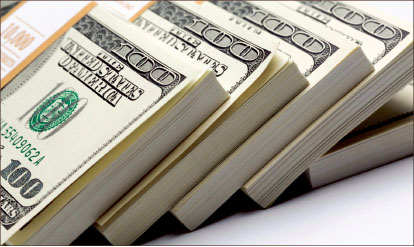Increase in minimum wage deceptive

Though temporarily beneficial, higher wages for federal workers could set a precedent for economic damage

INCOME — Obama’s new bill could boost minimum wage for federeal workers across the country. Google Images
In a political maneuver that surely thrilled millions of Americans, President Barack Obama announced plans in his State of the Union Address to raise the minimum wage of certain federal workers to $10.10 per hour. He also discussed campaigning to raise the federal minimum wage to the same level.
As the audience clapped enthusiastically, I could not help but roll my eyes in irritation. An across-the-board change of that magnitude would not be beneficial to businesses, workers or the economy. In fact, I would go so far as to say that any boost of the minimum wage is a poor decision.
Raisetheminimumwage.com, a website that unabashedly supports Obama’s policy, cites a number of studies showing how previous wage boosts have not hurt businesses or employees.
“A raise in the minimum wage puts money into the pockets of low-income consumers who immediately spend it at local businesses,” the website said.
I think it is a pretty bold thing to say that consumers will “immediately” spend their new income, but the idea does jive well with the materialistic Keynesian economic theory — that is, people must spend money to cause growth in the economy. I find the idea to be unconvincing.
Yet, these are admittedly difficult economic times. So, I think the most intelligent and responsible reaction to receiving extra income would be to save the money, not spend it. Or if it must be spent, use it for necessities.
Also, an article by Peter Morici of Fox News points out that “raising the minimum wage to keep pace with inflation creates little additional harm.”
So raising minimum wage is good, right? Well, no.
“(W)hat Obama is proposing is a wholly different matter,” Morici wrote in his article. “Congress last adjusted the federal standard in 2009. Since then, consumer prices are up 9 percent, but the president is proposing a 39 percent jump.”
The years 2007 and 2009 both saw rises in the minimum wage, according to raisetheminimumwage.com. In 2007, the wage went up by 27 percent to $6.55 per hour. In 2009, there was a 70 cent increase, or approximately 11 percent to $7.25.
Comparatively speaking, 39 percent is a huge leap upward — huge enough, I think, to have serious negative economic impact.
Businesses that only pay employees the standard $7.25 or slightly higher could probably not withstand a 39 percent bump. Employers then have two main options. They can lay off a few workers, or they can charge more money for their products.
You could argue that the wage increase balances the price increase, but such an assertion is incorrect. The millions of people that earn more than $7.25 an hour cannot expect to see a 39 percent pay raise. But they will see the costs of goods climb.
Also, consider this: According to the Department of Labor website, 21 states, including Washington, D.C., have minimum wages set higher than the federal level. Five states lack minimum wage requirements. The remaining states adhere to $7.25 per hour.
Further, the highest minimum wage is found in Washington, at $9.32 per hour. This means that even the highest paying state will see an 8 percent increase in payout.
If there must be a minimum wage, I think the states, and only the states, should have the authority to determine it. That means the federal government should not step in and override state levels. But this is not a realistic expectation.
Raisetheminimumwage.com suggests that in earlier years, when states expanded minimum wages independent of federal legislation, those states’ economies remained successful. People kept their jobs, and state income grew.
If a few states can do it and not suffer, why not implement the policy federally for all states? Because most of the increases were very small — mere cents compared to the $2.85 proposed by the president. It seems to me that the states made increases they could afford, not ones that would bankrupt society.
I expect this debate will continue, thanks to its many nuances and complexities. Considering all of its angles quickly becomes overwhelming.
But in order to reach an intelligent and informed conclusion, we must be willing to look beyond the fictional facade of dollar signs the president so alluringly dangles before us.
